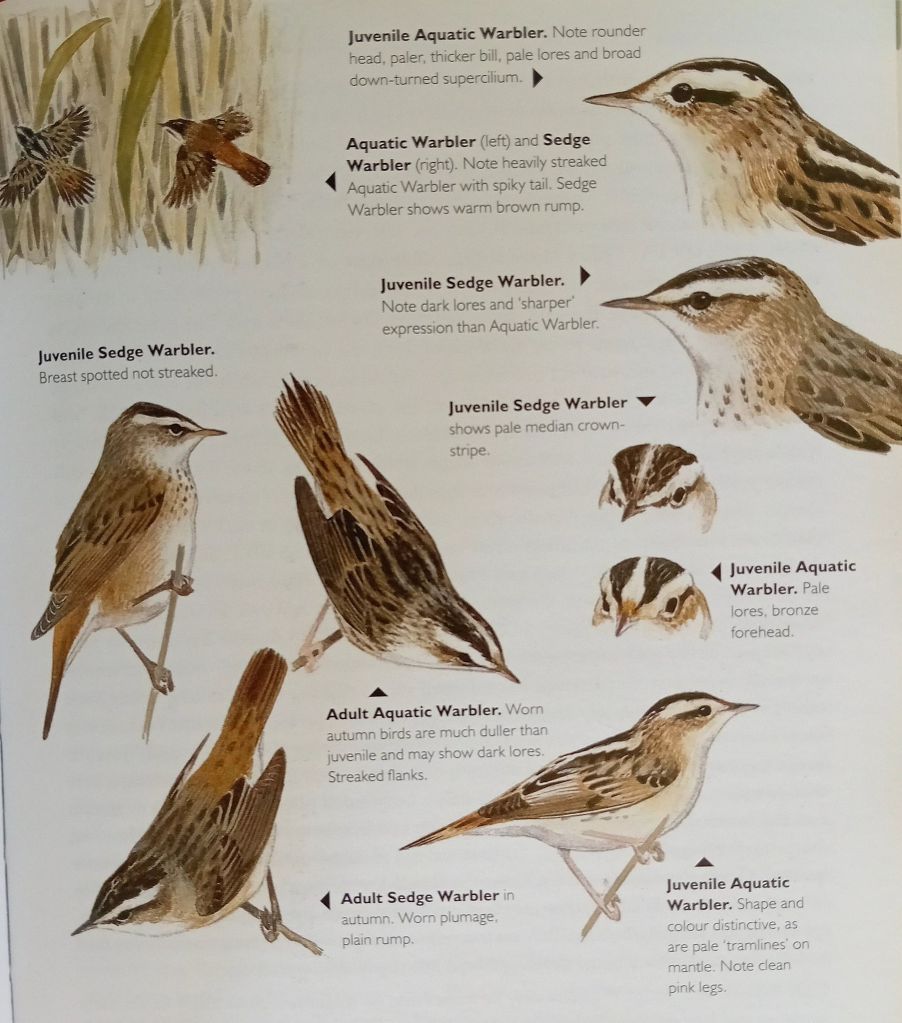In the normal run of things I am generally less motivated by North American than Siberian-breeding vagrant birds. But such has been the enormity of events currently stirring the national twitching world that I couldn’t resist getting involved in the end. The past seven days have brought what is now described as the biggest ever arrival of storm-blown, Nearctic migrant passerines and other birds around the British Isles (see here). And amongst 50 individuals of 15 species, an eye-catching British 1st-2nd-3rd record wood warbler cluster made landfall around Pembrokeshire and its offshore islands.
I felt tempted over the weekend to venture beyond range, having completed paying for 2023’s five tripettes abroad and various larger domestic bills, but the usual reservations over cost, fatigue and wearing out my car prevailed. Then matters were helped greatly by a second Magnolia Warbler, one of the earlier items to start all this at 210 miles, being confirmed on Sunday afternoon in Port Talbot just a little beyond where I travelled for the Pacific Diver in December 2021 (see here). Like a fortnight ago I should have paid more attention going into this week, but my present working weekends are invariably succeeded by a distracting stack of chores.
So it was not until late Monday morning that I realised how accessible, at 140 miles and close by the M4 motorway, the bird was. This was eminently do-able and I at once decided to mount a dawn twitch if MAG2 was reported into the evening. Indeed it was and I set off from home at just after 4am on Tuesday feeling confident that my quest would still be present without waiting for first news. After all there is really nowhere for these surviving storm, or in this instance hurricane blown waifs to move on to, though some do of course expire after landfall. Today the weekend’s star south-west Wales arrivals were all still being reported in good health, albeit mostly in limited access offshore nature reserves or on an active MoD firing range.
The earlier Magnolia Warbler (pictured above) at St Govan’s Head in Pembrokeshire was just the third for Great Britain, and so attracted a sizeable audience (see here). The second was a one-day bird on Fair Isle in 2012, and the first on Scilly back in 1981, so this new mainland opportunity was huge. These are fairly common breeders in coniferous forests throughout Canada and the US North-eastern and Great Lakes regions, migrating through the eastern and central US to winter in Mexico, the rest of Central America and around the Caribbean. On migration they are said to favour low trees and shrubs along forest edges and in parks, always showing a preference for denser habitat.
Presumably Baglan Energy Park (SS 73892 92244) is somebody’s patch. Though marketed by the owners as a premier Welsh business and industrial location, much of it remains undeveloped. First impressions upon arrival at 7am were what suitable landfall habitat for migrant birds this brownfield site of a past petrochemical plant also offers. My next sentiment was that with less than 10 other early birders present things could be hard work. But I was armed with precise directions from Adam (see here), who had done this on Monday and I remained in contact with, as to MAG2’s likely movements. As re-visiting birders also joined the gathering that picture was confirmed, and so the Magnolia Warbler was called for the first time at around 08:15.
Numbers of birders then swelled, including Oxon colleagues Colin Oram and Alan Peters, especially after news went out on the bird information services; and so my always elusive quest became less difficult to relocate. I myself gained three good views by 09:20 before going for a breakfast break, then a fourth afterwards. Like all Warblers this mega rarity was always hyperactive, moving around constantly in and out of cover. It was associating with a Tit flock and stood out when seen by the bright yellow breast, grey head and grey-green upperparts. The first winter bird was foraging low in the dense understory of a long line of trees to which it remained faithful throughout.
The species (see here) has no connection with Magnolia trees other than owing its misnomer to having been found in one by the ornithologist who first described it in 1810. The dense, boreal breeding habitat is shared with other, similarly colourful wood warblers such as Bay-breasted (here), Canada (here) and Blackburnian (here); all of which have turned up nationally in the current trans-Atlantic fall. Although Magnolia commonly joins mixed-species flocks during migration and on wintering grounds, it is said to keep apart from others of its own kind and aggressively defend individual feeding territories.
Given the attention surrounding its St Govan’s predecessor, I wonder whether MAG2 was taken quite as seriously until today. After my own departure from site this bird was reported as showing well throughout the afternoon and offering splendid views, so it got very much on a par then, and over the two more days that it lingered. For me this outing was an opportunity to burn energy and cleanse the spirit such as a successful solo twitch provides, and it was good to hit the road again for only the fourth time in two years.






